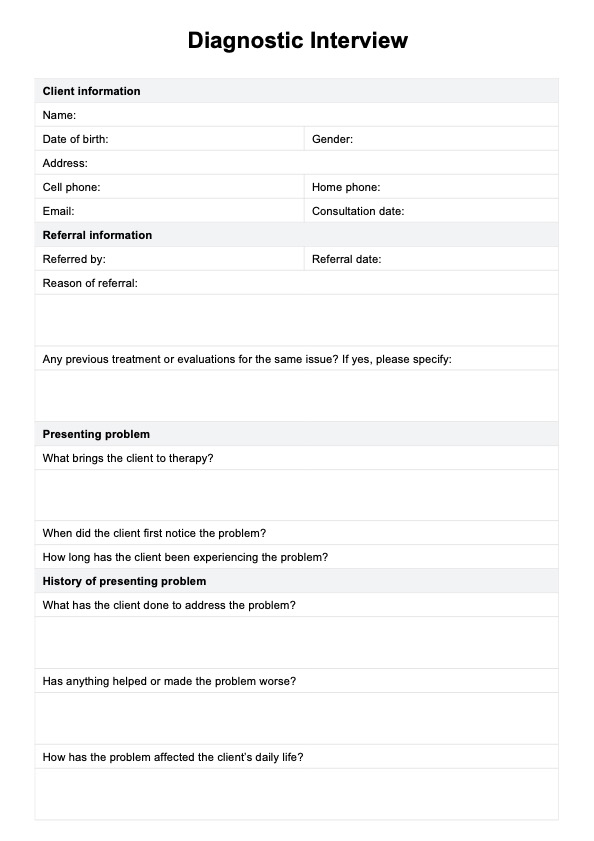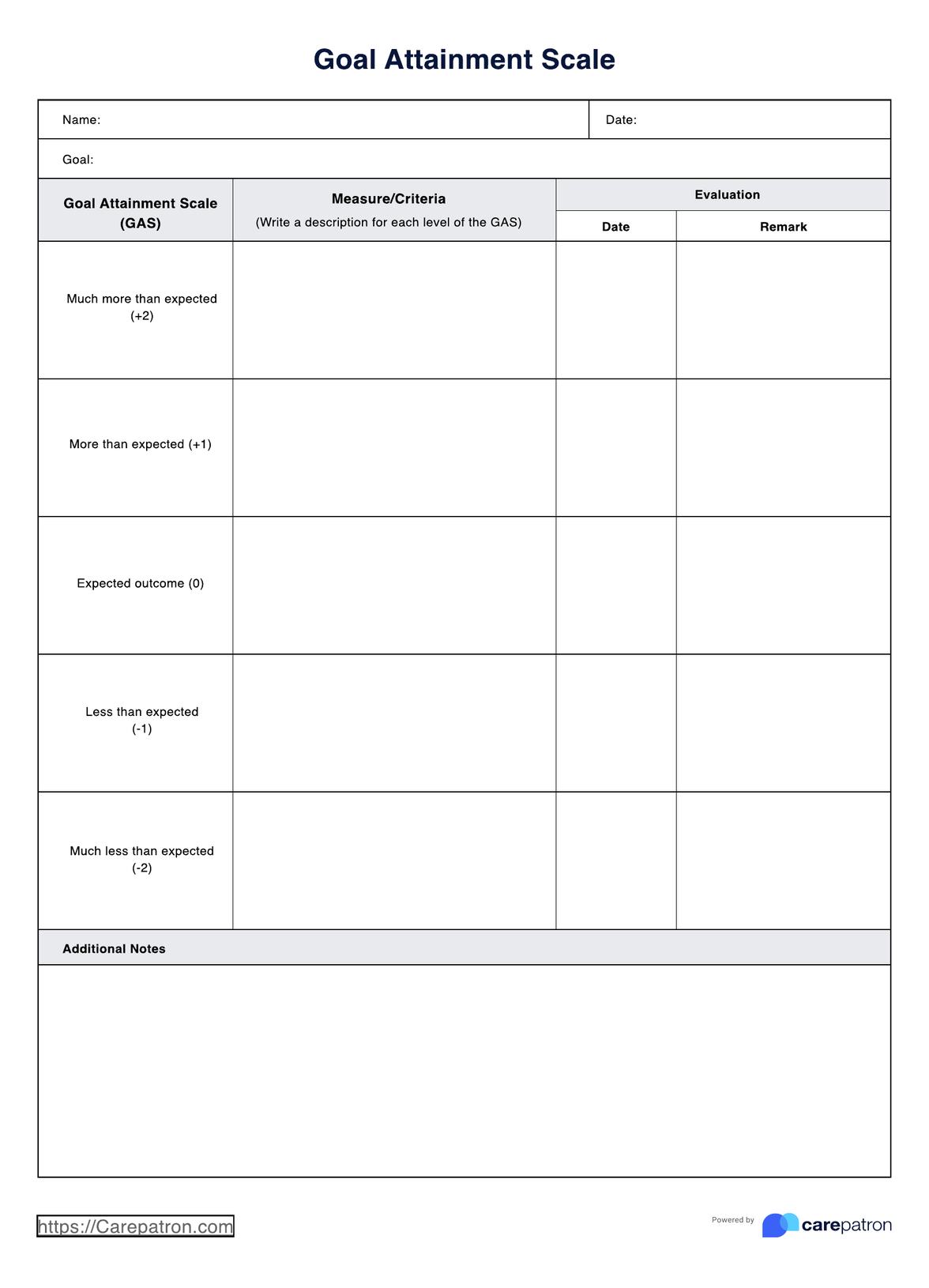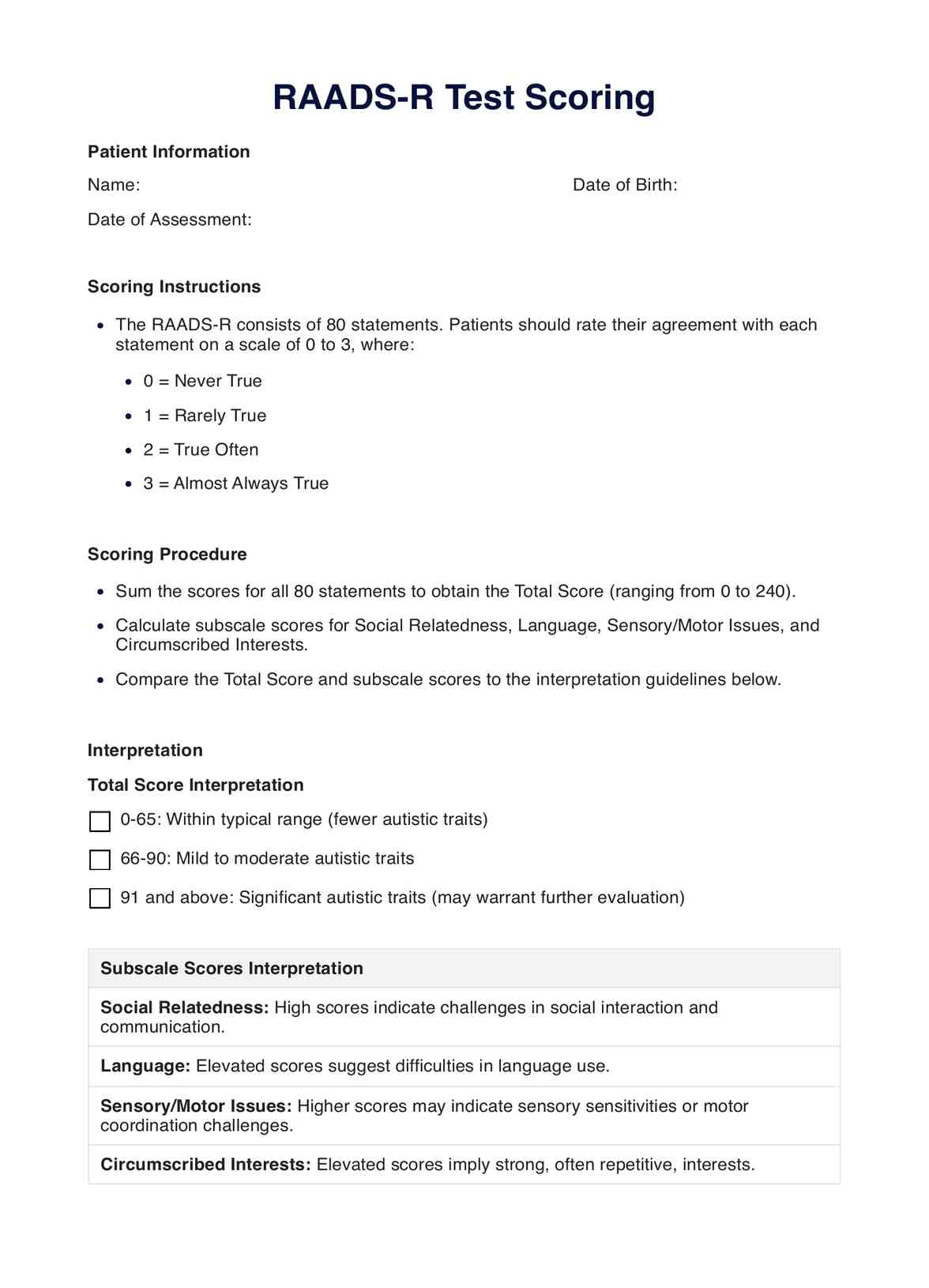Ruminating Thoughts Worksheet
Discover effective strategies to manage ruminating thoughts with our comprehensive worksheet, designed for mental health improvement and cognitive clarity.


What is rumination?
Rumination is the repetitive, passive focus on one's negative emotions and experiences. It involves continually thinking about the causes, consequences, and minutiae of past and present distress. This mental habit can lead to prolonged or intense psychological distress and is a common feature of mood disorders like depression and anxiety.
There are four types of rumination:
- Brooding: Dwelling on negative feelings and outcomes without actively seeking solutions.
- Reflection: Constructively thinking about problems to find solutions. This is a more helpful variant but can sometimes shift into less productive rumination.
- Problem-solving rumination: Focused on resolving issues but can become unhelpful if solutions are not actionable or it leads to further anxiety.
- Depressive rumination: Obsessively pondering the causes and consequences of one’s depressive symptoms.
Research into rumination dates back to the late 20th century, with significant contributions from psychologist Susan Nolen-Hoeksema. Her work on "response styles theory" identified rumination as a major factor in the maintenance and exacerbation of depression, particularly among women. The theory posits that the way individuals respond to their depressive symptoms can profoundly impact the duration and severity of these episodes.
Why do people ruminate?
People often ruminate as a way to process difficult emotions or to make sense of challenging events. However, while it might initially seem like a productive attempt to understand a problem, rumination frequently becomes counterproductive.
Here are some common reasons why people engage in rumination:
- Problem-solving gone awry: Some individuals believe that by thinking about a problem or concern repeatedly, they may find a solution. However, rumination often focuses more on the problem's negative aspects rather than constructive solutions.
- Mental habit: For many, rumination can become a habitual response to stress or emotional pain. It might start as a deliberate act but over time can become automatic.
- Personality traits: Individuals who are more perfectionistic or naturally lean towards introspection might be more prone to rumination.
- Biological factors: There might also be neurobiological underpinnings that make certain individuals more prone to ruminate than others, including differences in brain areas involved in emotional regulation and cognition.
Understanding how and why rumination happens is crucial for coming up with therapeutic strategies to mitigate its effects and improve the lives of those affected.
Ruminating Thoughts Worksheet Template
Ruminating Thoughts Worksheet Example
How to combat rumination
Combatting rumination effectively involves implementing various psychological strategies. Here are some examples of methods that mental health professionals can introduce to their patients to help address rumination:
- Cognitive distancing: Teaching patients cognitive distancing can help them view their thoughts as mere mental events rather than reflections of reality. This method involves observing one's thoughts and recognizing that thoughts are not the self but rather passing mental phenomena.
- Mindfulness meditation: Mindfulness meditation encourages individuals to remain present and aware without over-engaging with intrusive thoughts. Regular mindfulness practice can help patients learn to detach from ruminative cycles and focus more on the present moment.
- Scheduled worry time: Allocating a specific time of day for worrying or thinking deeply about concerns can confine ruminative thinking to a controlled environment. This helps prevent rumination from spilling over into everyday activities, allowing individuals to focus on their tasks without constant distraction.
- Behavioral activation: Encouraging patients to engage in activities that promote positive interaction and achievement can shift their focus away from ruminative thoughts. Behavioral activation aims to replace rumination with actions that are rewarding and align with personal values and goals, which is a better way to cope.
- Expressive writing: Expressive writing allows individuals to process their ruminative thoughts through writing, offering a way to express and analyze their concerns constructively. This can lead to insights and emotional release, reducing the burden of bottled-up feelings.
Integrating these treatment strategies into therapeutic practices can offer individuals diverse tools to combat rumination, fostering better mental health and enhanced well-being.
What is a Ruminating Thoughts Worksheet?
A Ruminating Thoughts Worksheet is a practical tool designed to help individuals identify, analyze, and manage their ruminative thoughts. This type of worksheet is particularly useful for those who find themselves frequently caught in cycles of repetitive, negative thinking that disrupts their daily functioning and emotional well-being.
What to expect when engaging with this worksheet
When engaging with a Ruminating Thoughts Worksheet, users can expect to confront and dissect their ruminative thoughts through structured prompts and questions. The worksheet guides users in tracking the frequency and context of their ruminative episodes, helping them to recognize patterns and triggers. It provides a space for reflection on what these thoughts entail, how they affect one’s mood and behavior, and strategies for managing or altering these thought patterns.
Carepatron's Ruminating Thoughts Worksheet includes two key parts:
- Rumination journal: This section allows users to log each instance of rumination, noting the time, situation, and the nature of the ruminative thought, along with actions taken to redirect their focus.
- Specific thought breakdown: This part delves deeper into selected ruminative thoughts from the journal, asking users to explore the duration, impact, and underlying reasons for these thoughts, as well as their sensory experiences during rumination.
Goals of this worksheet
The Ruminating Thoughts Worksheet has several goals. Take a look:
- Increased awareness: Helping individuals become more aware of when and why they ruminate, increasing their understanding of the triggers and contexts that lead to rumination.
- Cognitive restructuring: Assisting users in challenging and changing unhelpful thought patterns that contribute to rumination.
- Skill development: Teaching techniques such as mindfulness, cognitive distancing, and problem-solving that can reduce the frequency and intensity of ruminative thinking.
- Emotional regulation: Facilitating better management of emotions through structured reflection and planning, thus reducing the negative impact of rumination on emotional health.
This worksheet serves as both a therapeutic intervention and a self-help tool, enabling users to gain control over their ruminative thoughts and improve their mental health.
How to use our Ruminating Thoughts Worksheet template
Using our Ruminating Thoughts Worksheet template can greatly assist mental health professionals in helping their patients manage ruminative thinking. Here’s how to effectively implement this tool in therapeutic settings:
Step 1: Access the template
For healthcare professionals, the initial step is to access the Ruminating Thoughts Worksheet template. This can be done through downloading it from the Carepatron app or directly from our website’s Resource Library. Providing the template to your patients can be facilitated digitally via our patient portal or as a printed form for face-to-face sessions.
Step 2: Explain the template
Before your patients begin working with the worksheet, it’s crucial to explain its purpose and how it is intended to be used. Discuss the importance of identifying and understanding ruminative thoughts and how this awareness can lead to better emotional management. Explain each section of the worksheet clearly so that patients know what kind of information they need to provide and why it is significant.
Step 3: Guide the patient through the worksheet
Assist your patients in filling out the worksheet by guiding them through each section. This includes:
- Rumination journal: Help them document each occurrence of rumination, noting the specifics of the situation and their actions to distract themselves.
- Specific Thought Breakdown: Encourage them to select one or more thoughts from the journal to analyze further. Support them in dissecting these thoughts to understand their duration, distraction level, consequences, and the underlying reasons.
Ensure that they reflect deeply and provide detailed answers, which will enhance the effectiveness of the exercise.
Step 4: Provide additional support
After the worksheet is completed, review it together with your patients. Discuss the entries in detail, provide feedback, and offer additional cognitive or behavioral strategies as necessary. This might include suggesting more effective distraction techniques, introducing mindfulness exercises, or exploring deeper psychotherapeutic interventions.
Step 5: Reflect on the outcome
Finally, encourage your patients to reflect on the process after they have used the worksheet for a period. Discuss how the exercise has affected their rumination patterns and overall emotional state. Explore what strategies worked well and what areas need further improvement. This reflection helps consolidate the learning and plan future steps for managing ruminative thoughts more effectively.
By methodically using the Ruminating Thoughts Worksheet, mental health professionals can help patients not only understand their ruminative behavior, but also develop skills to manage and reduce their impact effectively.
Benefits of using this worksheet
The Ruminating Thoughts Worksheet is not just a tool for recording thoughts; it serves as a strategic method for managing and reducing the impact of rumination. Here are some specific benefits users can experience:
Enhances self-awareness
This worksheet helps users become more aware of their thought patterns, especially those that are negative or repetitive. By logging thoughts and their contexts regularly, users can start to identify specific triggers and situations that lead to rumination.
Improves thought management
Through the process of documenting and analyzing ruminative thoughts, individuals learn techniques to redirect their attention and reduce the frequency and intensity of these thoughts. This is crucial for breaking the cycle of rumination that can lead to or exacerbate mental health issues such as anxiety and depression.
Facilitates behavioral change
The act of writing down thoughts and reflecting on their consequences enables users to see the negative impacts of rumination clearly. This awareness is the first step towards making deliberate changes in how they respond to stressors or emotional triggers.
Supports cognitive restructuring
Part 2 of the worksheet, which involves breaking down specific ruminating thoughts, is aligned with cognitive-behavioral therapy techniques. It encourages users to challenge and reframe their negative thoughts, promoting healthier thinking patterns.
Provides a structured approach to therapy
For therapists, this worksheet offers a structured approach to addressing rumination with their clients. It can be used as part of cognitive behavioral therapy sessions to guide discussions and as homework for clients to practice skills in between sessions.
By reaching the goals set out in the worksheet's structure, these benefits guide users toward not only managing their ruminative thoughts but also towards a more mindful and less reactive mental state. This can significantly enhance their overall well-being and ability to engage more fully with life.
Commonly asked questions
The four types of rumination are brooding, reflection, problem-solving rumination, and depressive rumination. Each type varies in its focus and potential impact on mental health.
Ruminating thoughts are often triggered by unresolved past experiences, ongoing stress, feelings of inadequacy, or significant life changes that create emotional upheaval.
To stop ruminating thoughts, engage in activities that break your cycle of rumination, such as physical exercise, talking with friends, mindfulness practices, or structured problem-solving.


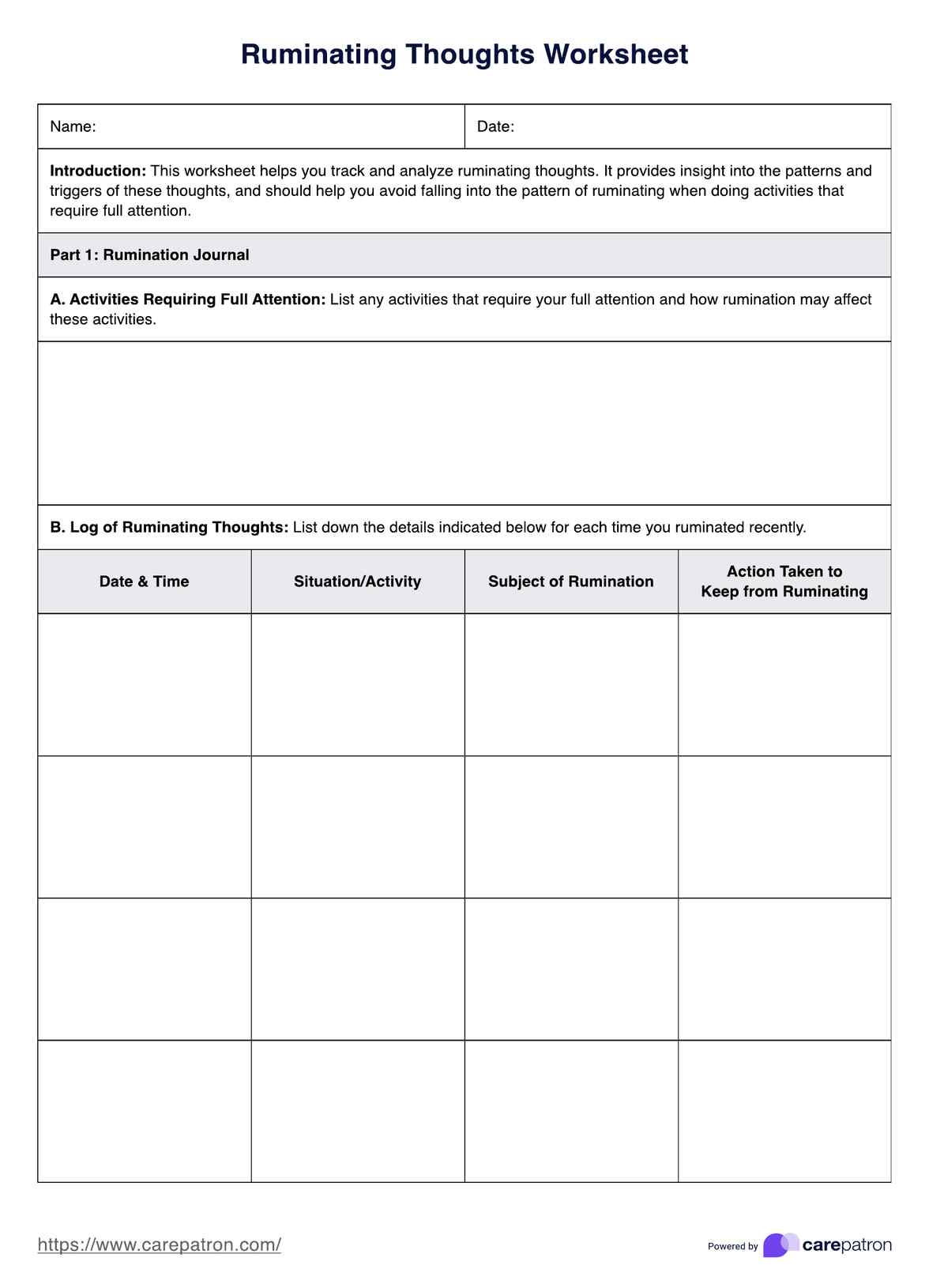
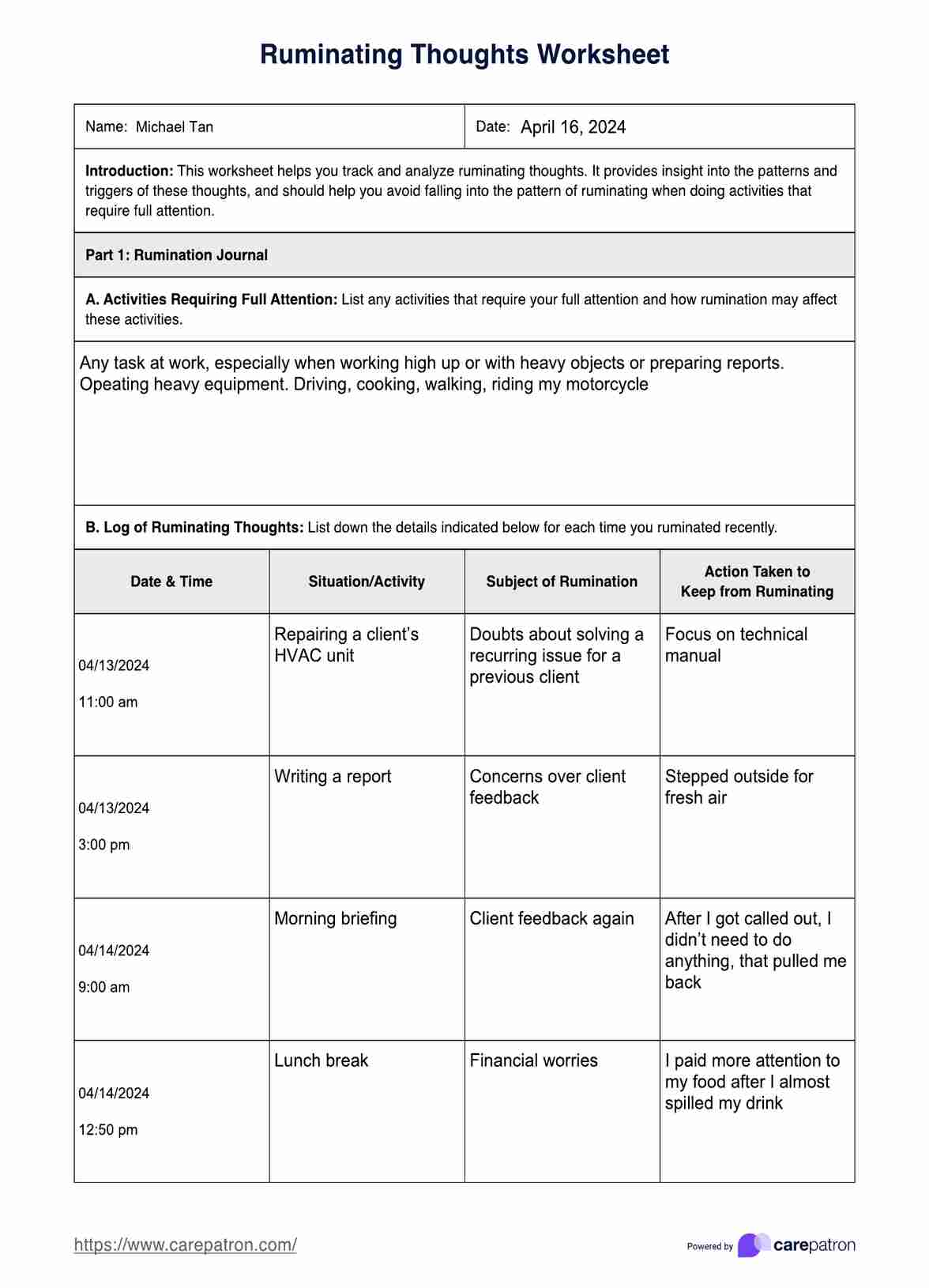

















-template.jpg)


























































































